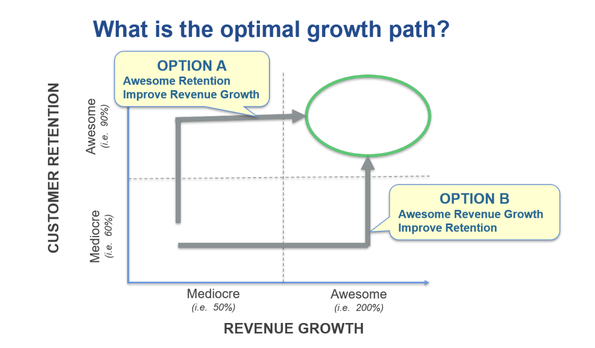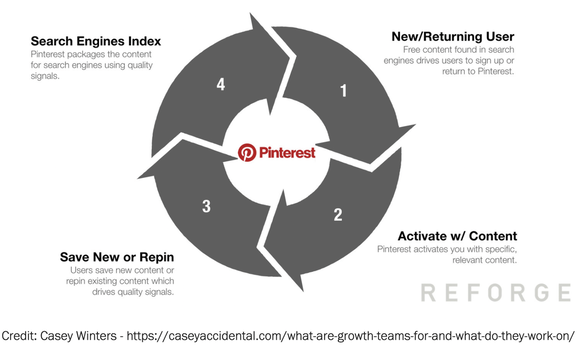|
Product-market fit is the degree to which a product satisfies a strong market demand. It is widely considered to be the first step to building a successful venture, whether a new startup, a new business unit or product within an established company. Only 4% of startups make it past the seed funding stage, and from there, only 70% go on to generate consistent revenue, according to the How To Win podcast. The most common reason is simply a failure to find enough customers. Those percentages are even lower when you factor in failed product launches at established companies. Product-market fit eludes so many. So what are the secrets to achieving product-market fit? And how do you know when you've got it? WHAT ACHIEVING PRODUCT-MARKET FIT LOOKS LIKE Before understanding the steps to achieve product-market fit, it's important to understand what it looks and feels like. Many definitions and metrics have been proposed. A classic test for product-market fit was suggested by Sean Ellis. Ask your early-adopter customers: How would you feel if you couldn't use our product anymore? You want to see at least 40% of customers respond that they would be "very disappointed" ("somewhat disappointed" is not enough). From this simple test, we have a clear picture of what it looks like to be on the road to product-market fit: You need to have some early-adopter customers, which is easier said than done when you are starting a new initiative. And you need evidence that those customers enjoy the product enough that they will keep using it (retention), buy more of it (related sales), and recommend it to others (referrals). In other words, the famous 3 R's of customer loyalty. You can measure product-market fit with leading and lagging indicators. Leading indicators include metrics like the test above, users saying they would be very disappointed. Another leading indicator is the Net Promoter Score (NPS) for measuring customer satisfaction and customer loyalty. Leading indicators are strong clues that customers will exhibit the behaviour you want, such as buying, renewing, referring. Lagging indicators actually measure the outcomes, such as the number of renewals and dollar amount associated with them (in SaaS, ARR and MRR), upsell ratio, referral ratio, customer churn, and customer lifetime value (CLV). There are also qualitative ways to judge product-market fit that are harder to measure with KPIs, as some Silicon Valley gurus point out: You can always feel product/market fit when it's happening. The customers are buying the product just as fast as you can make it -- or usage is growing just as fast as you can add more servers." — Marc Andreessen GETTING EARLY-ADOPTER CUSTOMERS The definition of product-market fit is not terribly rigorous, but we all get the gist of what it means. Everyone wants customers banging down their door. So what about the vast majority of startups and new products at established companies that are just starting out? How do you get from no customers at all to customers arriving in droves? Find 1 Lead Customer, And Others Will Follow You should never start a new product without at least 1 lead customer that you are working with along the way. Y-Combinator says "act as if you are a consultant building something just for that one user. The initial user serves as the form for your mold; keep tweaking till you fit their needs perfectly, and you'll usually find you've made something other users want too." Ramp up Lead Generation I've written extensively about How A Startup Founder Generates Leads and How to Generate Leads At A New Startup. A startup is a race: you are burning through limited funding, and every day you need to go all-out before funding runs out. Even a new product at a more established company only has a limited time to prove itself before leadership - and the market - loses confidence. In short, the earliest customers should be coming from personal networking. You can certainly mount content marketing, advertising, SEO, and so forth but in the early days these will always play second fiddle to the customers you find from getting referred by people who already know and trust you. WHAT IF I HAVE POTENTIAL CUSTOMERS BUT THEY DON'T CONVERT? "I get a lot of webinar attendees and free trial signups, but these users don't convert into paying customers." "I have users that signed up, but I need to make them stay and share the app more!" In both cases, it sounds like you had some success generating interest, but once users get there, they aren’t too into your product. You may also have some pretty significant leaks somewhere in your user journey. Your priority should be to identify the leaks and make something users actually love. Talk to Customers and Potential Customers Every Day Spend equal amounts of time generating leads and simply talking to potential customers. Not in a sales context, but interviewing customers about their pain points and aspirations to better understand how your product could be a better fit. It's always so impressive to me how - through conversation - you can uncover a slight tweak to the product or its positioning that will take it from something people feel neutral about to something they are clamouring for. Pragmatic Marketing urges you to talk not only to existing customers but to early leads and potential customers who have never heard of you. Talking to partners, advisors and market analysts can be useful as well, but by no means a substitute for the actual target persona. Hiring your first head of product? Ask all the candidates what they'll do in the first 30 days. If 'Meet With as Many Customers As Soon As Possible' isn't in the first 2 responses, pass." - Jason Lemkin If you don't have a head of product yet, then the CEO should be having these daily conversations. Ask users: 1. What brought you to our website in the first place? 2. How did you think you would use the product? How are you actually using the product? (in the way that is intended, or maybe in a different way that is unexpected?) 3. Did you recommend the product to others? If so, how did you describe it to them? 4. What is the key benefit that you get from the product? (not the what, but the why). Why is that important to you? Once you start to see patterns of answers you can dig deeper. The patterns of answers that emerge will guide your roadmap AND most of all clue you in to who values your product most. Follow a Proven Business Model If you're tried of advice like "uncover a market problem and solve it" and you need something more specific, NFX lists 10 proven product-market fit patterns. Just as an entrepreneur can reduce their risk by franchising a proven business model rather than inventing something brand new, a software product entrepreneur can follow one of these proven playbooks:
CUSTOMER RETENTION In recent years, there's been an industry push to focus most of all on retention as the strongest indicator of Product-Market Fit. You can ask whether users like your product, but retention is the proof. Moreover, customer churn is a fantastic guide as to where you need to focus your attention to improve the product and overall customer journey. The Science of Scaling asks which would you prefer, awesome revenue growth and improved customer retention, or awesome retention and improved revenue growth? Though it's very tempting to focus on the former, the paper makes the case that the latter - awesome customer retention - correlates much more strongly with long-term product-market fit. In the early stages, every customer should have extra attention to ensure they are having a great experience: You can and should give users an insanely great experience with an early, incomplete, buggy product, if you make up the difference with attentiveness [...] Your first users should feel that signing up with you was one of the best choices they ever made. And you in turn should be racking your brains to think of new ways to delight them." - Paul Graham NPS NPS is often held up as the gold standard customer experience metric. NPS measures customer perception based on one simple question: "How likely is it that you would recommend [Organization X/Product Y/Service Z] to a friend or colleague?" Respondents give a rating between 0 (not at all likely) and 10 (extremely likely) and, depending on their response, customers fall into one of 3 categories to establish an NPS score:
Follow A North Star Metric Pick a metric that best captures the core value your product delivers to customers, then rally your teams cross-functionally to improve that metric. Examples: Airbnb - nights booked (value for hosts and guests every time a night is booked), Facebook - Daily Active Users (every time new users are on the FB platform it becomes more valuable to the other users). Minimize Friction In Stop Trying to Delight Your Customers, HBR provides research that customers aren’t so much interested in being delighted as they are simply interested in a frictionless experience, ie. achieving their goals with minimum ‘effort’ required on their part (product is intuitive and usable, delivers value quickly, etc.) Instead of traditional NPS score that measures customer delight, the researchers measured the experience using a metric called Customer Effort Score (CES) and found that CES correlated higher with customer loyalty, repeat business and referrals compared to other experience metrics. If customer retention is the most important focus for growth, why not track several metrics: NPS, CES, and a north star metric tailored to your business model? WANT REFERRALS? PLAN IT INTO YOUR BUSINESS MODEL WITH "GROWTH LOOPS" The last critical component of product-market fit is referrals. Your business won't take off without word of mouth. Referrals come in many forms. Old school referrals were sales people asking customers to introduce them to another potential customer. But in today's world of online reviews and social media, there are many new ways to encourage word of mouth. One strategic way of intentionally planning word of mouth into your business model is by planning a "growth loop", a strategic canvas popularized by Reforge. The concept is to show how your business model drives a network effect or "flywheel effect", where every customer generates more customers through referrals and word-of-mouth, leading to compound growth. For example, Pinterest's "growth loop" looks like this:
I don't personally buy Reforge's idea that growth loops are a revolutionary tool for planning growth. But they are a useful way of intentionally visualizing your strategy to generate word of mouth and align stakeholders' attention to it. HIRE AN EXPERT IN PRODUCT-MARKET FIT The Science of Scaling describes the role I played for many years, a "half product manager / half account executive" tasked with growing a new company from scratch. "The first sales hire - half product manager, half account executive - should have the skills to handle objections and comfort discussing money like an account executive. However, they should also have the ability to pattern recognize feedback from the target market and communicate the patterns to engineers. Focus on these attributes when evaluating candidates:
It's nice to see this role 'formalized' in a growth methodology. I would add: make sure to set this person up as a Single-Threaded Owner, with 100% focus and accountability to product-market fit. Though product-market fit can never be outsourced, a consultant who has grown major new products and business lines can help you leap forward on your progress and avoid all the usual pitfalls that routinely come up.
0 Comments
Your comment will be posted after it is approved.
Leave a Reply. |



